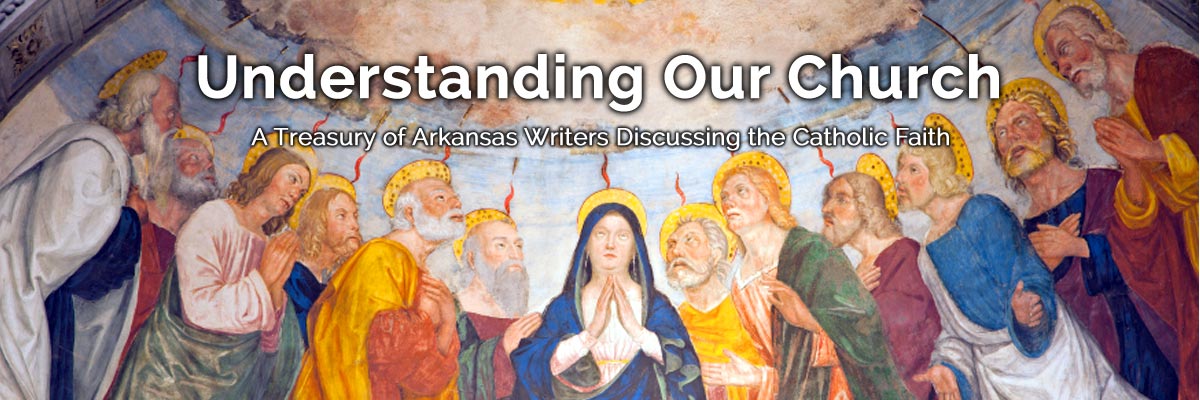Official Website of the
Catholic Diocese of Little Rock
Some saint designations inspire us to contemplate our own labels
Published: April 5, 2018
By Kelli Nugent
St. Edward Church, Texarkana
Occasionally I find myself pondering curious things about the Catholic faith. Recently, I has been thinking about the designations given to the saints, such as martyr, confessor, virgin, etc. In some cases, the designation is evident, but not always.
In the summer of 2015, I was having a discussion with a newly ordained priest about this subject. I shared with him that I was curious about the designation “confessor.” Did that mean the man was a priest and a “good confessor” — like well-known confessors, St. John Vianney or St. Pio — or did that refer to another sense of the word, meaning confessing one’s faith in Christ?
Was this designation ever used for women saints? The priest said that he didn’t think that it referred to being a priest confessor because he knew that St. Benedict was given the designation, confessor, but that St. Benedict (founder of the Benedictine Order) was not an ordained priest.
Confessor is the designation given to all male, non-martyr lay persons heroically living the Christian life in a non-clerical state. Interestingly, there is not an equivalent word designation for all female, non-martyr lay saints.
In continuing this conversation, I also commented on the designation “virgin.” Was that only used for women? Men are called to purity, chastity and continence in the same way as women, according to their state in life. Is the designation “virgin” also used for men who are saints?
Though this topic has held my interest for a while, there isn’t exactly a dearth of information about it. For help, I called on Father Carlos Martins, a Companions of the Cross priest, who travels the world with an exposition of sacred relics called Treasures of the Church.
His first explanation is that saints fall into two categories: martyrs and non-martyrs. There is also a further distinction for martyrs, those who died “in odium fidei" ("in hatred of the faith"), like Charles Lwanga or Teresa Benedicta of the Cross (Edith Stein) and those who died defending a virtue, such as Maria Goretti, who died defending her chastity.
Just to be clear, the persons who died because of their faith in Christ Jesus did not “hate the faith,” but those who murdered them did so out of hatred.
Many of the designations or appellations of the saints are clear enough to the modern Catholic, such as those that denote a particular vocation: deacon, spouse (such as Louis Martin and Zelie Guerin, the parents of Therese of Lisieux), soldier, nun (like Teresa of Kolkata), even king. Often, a saint may have two designations, such as soldier martyr.
So, who decides the designation for a particular saint? Father Martins said in more modern times it is the postulator of the cause who selects the designation, called “grounds,” for the particular individual whose cause for canonization they are promoting and then that claim must be backed with evidence to prove it.
In answer to the questions mentioned earlier about confessor and virgin, confessor is the designation given to all male, non-martyr lay persons heroically living the Christian life in a non-clerical state. Interestingly, there is not an equivalent word designation for all female, non-martyr lay saints.
Virgin is only applied to females who were unmarried and heroically living the Christian life, though it does apply to women in the religious life too and a woman or girl can be a virgin martyr. Occasionally a woman receives the designation, "widow," but a man does not receive the designation, "widower."
In our own lives, each of us have many designations or labels; sensitive, perfectionist, wallflower, gifted, jock, virtuous, tightwad, generous, hothead. As we keep our eyes on the ultimate goal of heaven, it is beneficial to look at the examples given by the saints and consider what our own designation would be if someone were to postulate our cause for canonization. After all, we are supposed to strive to become a saint ourselves — work toward it.




